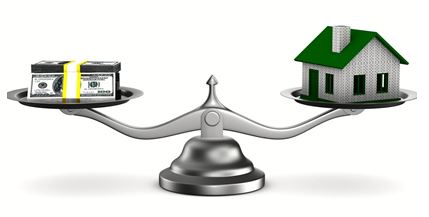The good news is that home prices are still going up. The better news is that it’s happening a little more slowly.
All three of S&P Case-Shiller’s home price indices for August exhibited a degree of moderation in what are still strong price gains. The National Home Price Index (HPI) fell below 6.0% for the first time in more than a year, posting a 5.8% annual gain. The 10-City and 20-City Composites showed similar deceleration and 10 of the 20 cities they track saw prices decline.
The National Association of Realtors (NAR) released their quarterly data on prices in 178 metropolitan areas and, while 166 of them saw an increase in single family home prices, the number with double digit appreciation dropped from 24 in the 2nd quarter to 18. On a national basis, single family homes appreciated by 4.8% from the 3rd quarter of last year, a slight dip from the rate in the 2nd quarter, and condo prices were up “only” 2.3%.
NAR Chief Economist Lawrence Yun has been raising affordability concerns for some time. While he still pines for more inventory and increased homebuilding, he also sees positives in the moderating prices. “As mortgage rates continue to rise, reaching the decade’s highest rates this quarter, an increase in the supply of affordable homes has become even more important to help temper price growth across the country.”
S&P’s David M. Blitzer sees no warning signs in the price slowdown. “In 2006, when home prices peaked and then tumbled, mortgage default rates bottomed out and started a three year surge. Today, the mortgage default rates reported by the S&P/Experian Consumer Credit Default Indices are stable. Without a collapse in housing finance like the one seen 12 years ago, a crash in home prices is unlikely.”
LIBOR to End
A major index, the London Interbank Offered Rate (LIBOR), is scheduled to disappear in 2021. That might not mean much to you unless you have an adjustable rate mortgage (ARM). The LIBOR determines the new rate when many ARMs adjust and is the basis for many other non-fixed rate loans.
A major scandal in 2008 sealed LIBOR’s fate, but not many seemed concerned about replacing it until lately. The Urban Institute just suggested that, if the current heir apparent, the Secured Overnight Financing Rate (SOFR) is ultimately chosen to succeed LIBOR there could be massive unintended consequences. Significant differences in their infrastructures could result in reset rates 25 to 50 basis points lower than those derived with the old index, potentially creating a $2.5 to $5.0 billion windfall for ARM borrowers. Unfortunately, it would cause a matching shortfall for secondary market investors and banks that keep loans in their own portfolios.

